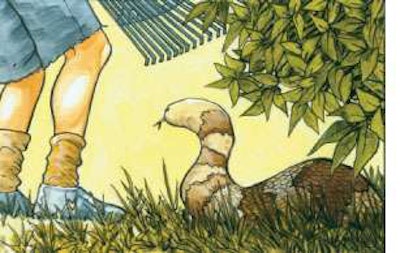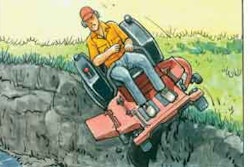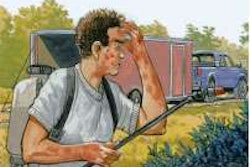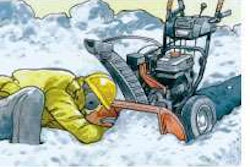
The accident: A 57-year-old landscape worker in North Carolina is installing shrubbery around the perimeter of a backyard pool on a hot summer afternoon. He is wearing shorts and tennis shoes while raking leaves from the work site. A sudden, sharp pain in his ankle is the first sign of a Copperhead bite.
He reaches down to grab the snake, and it bites his hand. When his co-workers arrive, the man is already experiencing shortness of breath and blurred vision, and both his ankle and hand are swelling. His co-workers calm him and call 911. They spot the snake and note its coloring and markings. The victim is transported to a hospital where he eventually makes a full recovery.
The bottom line: Approximately 45,000 snakebites occur in the United States each year, and nearly 7,000 are by venomous snakes. While it’s a frightening and often painful experience, only 15 people die of their injuries. Eighty-five percent of natural bites, (ones where the victim was not handling or molesting the snake) are below the knee, and 50 percent are “dry” (no venom is injected). In this case, the victim should have been wearing protective boots, gloves and long pants while working near water on a hot day in an area known for copperheads. Never try to capture the snake that just struck; it will be agitated and aggressive. The man’s co-workers did the right thing by calling 911 and keeping him calm.
Here are some ways to prevent snake bites:
• Do not try to handle, poke or agitate a snake.
• Be alert when working around tall grass, piles of leaves, rocks or water.
• Avoid climbing on rocks or piles of wood where a snake may be hiding.
• Be aware snakes tend to be active at night and in warm weather.
• Wear boots and long pants tucked into your boots.
• Wear leather gloves when handling brush and debris.
If you are bitten by a snake:
• Seek medical attention as soon as possible.
• Note the color and shape of the snake, which can help with treatment of the bite.
• Keep still and calm. This can slow down the spread of venom. Remember most snake-bite victims survive.
• While waiting for emergency medical services, lay or sit with the bite below heart level.
• If an ambulance will not arrive quickly and you can’t get to a hospital right away, wash the bite with soap and water then cover it with a clean, dry dressing.
Do not:
• Pick up the snake or try to trap it.
• Wait for symptoms to appear before seeking medical attention.
• Apply a tourniquet.
• Slash the wound with a knife.
• Suck out the venom.
• Apply ice or immerse the wound in water.
• Drink caffeinated beverages.










